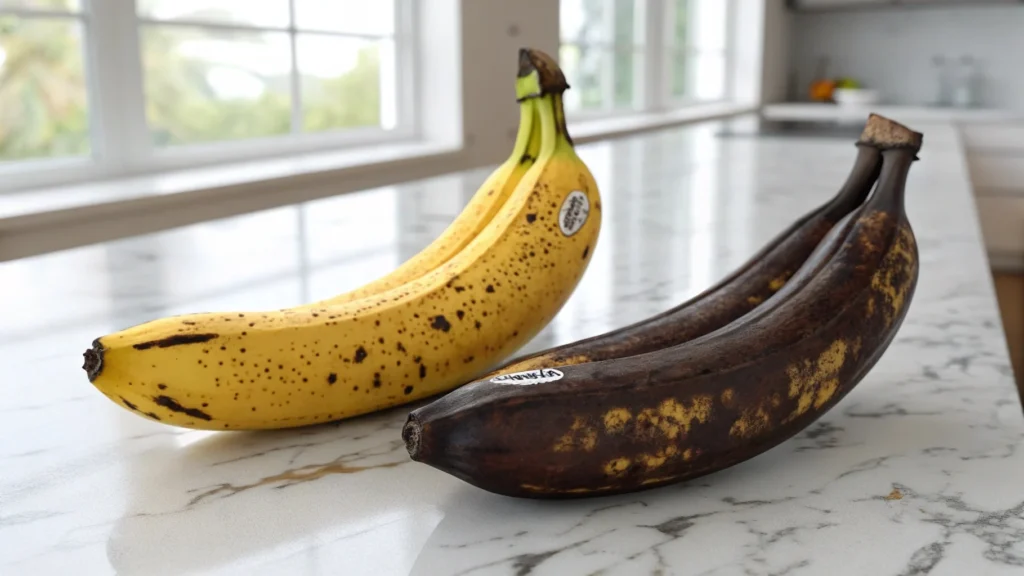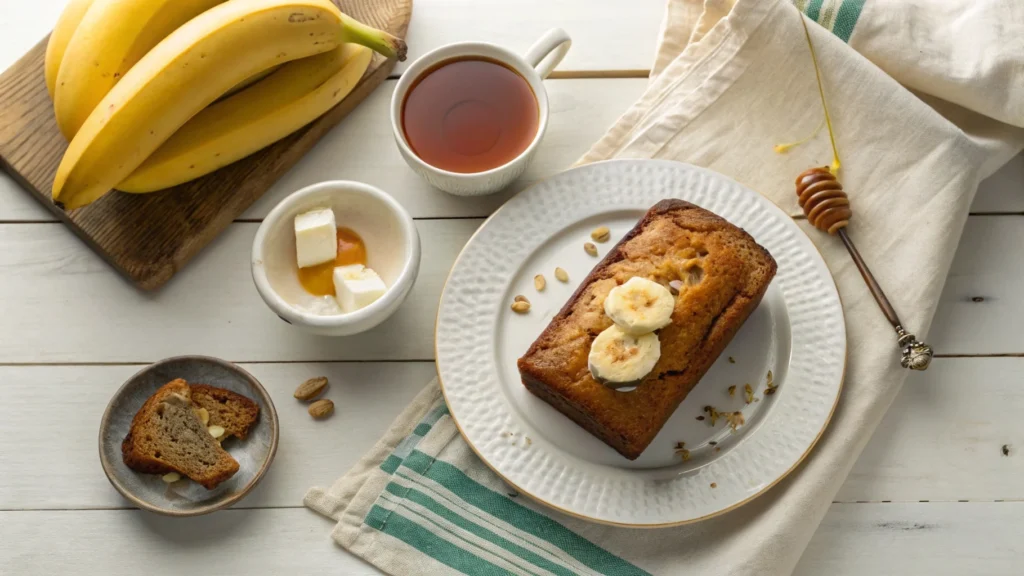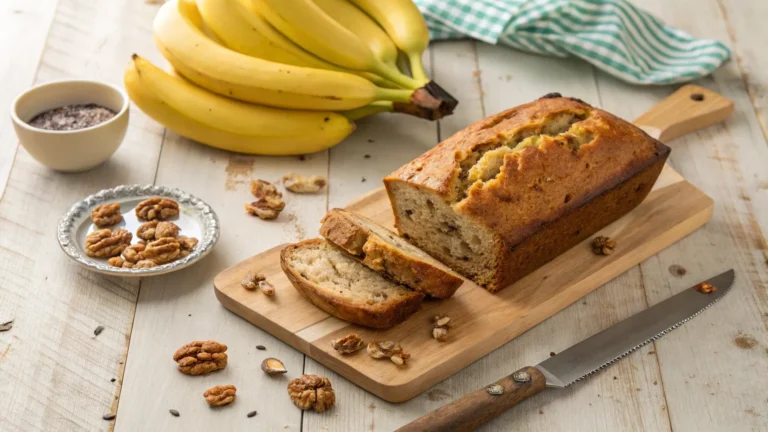Why Use Bananas in Baking
Baking is an art that thrives on creativity and balance, and bananas are one of those magical ingredients that can elevate your recipes in ways you may not have imagined. From their natural sweetness and moisture to their health benefits and versatility, bananas hold a special place in the heart of bakers everywhere. In this guide, we’ll uncover why bananas are a baking essential, explore their role in popular recipes, and share practical tips for making the most of this humble fruit. Whether you’re crafting banana bread, muffins, or experimenting with unique desserts, this article has you covered.
Table of Contents
The Role of Bananas in Baking
Understanding Bananas as a Key Ingredient
Bananas bring more than just a pop of flavor to baked goods—they’re a versatile ingredient that transforms texture and taste. Their natural sweetness makes them a favorite for desserts and snacks, while their rich, creamy consistency provides a unique foundation for batter. Bananas stand out because they harmonize with a variety of flavors, from chocolate to nuts and even citrus.
The chemistry behind bananas also works wonders. The fruit’s pectin content contributes to its soft, melt-in-your-mouth quality, making baked treats irresistibly moist. Additionally, bananas’ mild acidity balances the sweetness in recipes, creating a well-rounded flavor profile.
Bananas as a Natural Binder and Moisture Provider
Have you ever noticed how bananas can replace eggs in certain recipes? That’s because they act as a natural binder. Bananas contain starches and fibers that hold ingredients together, which is perfect for vegan or egg-free baking. About half a cup of mashed banana can replace one egg in most recipes, making it an ideal solution for those with dietary restrictions.
Bananas are also champions of moisture retention. Their high water content ensures baked goods remain soft and tender long after they’ve come out of the oven. This characteristic is particularly valuable for recipes like muffins or brownies, where dryness can easily ruin the final product.
In short, bananas are more than just a fruit—they’re an all-in-one sweetener, binder, and moisturizer. Whether you’re a seasoned baker or a newbie, incorporating bananas into your recipes can take your creations to the next level of deliciousness.
Ripe vs. Overripe Bananas: Choosing the Right Stage
What Ripe Bananas Add to Recipes
Ripe bananas are a baker’s secret weapon when it comes to achieving the perfect balance of taste and texture. When a banana reaches its yellow stage, often dotted with brown specks, its natural sugars are at their peak. This sweetness not only enhances the flavor but also reduces the need for additional sugar in recipes.
The firmness of ripe bananas also plays a role in texture. They’re soft enough to blend seamlessly into batters while still holding enough structure to provide body. For recipes like banana muffins or cakes, this is exactly what you need. Plus, their mild tanginess pairs wonderfully with spices like cinnamon and nutmeg, giving your baked goods a cozy, warm flavor.
Why Overripe Bananas in Baking Work Best
Ever wondered why overripe bananas are better for baking? It’s all about the sugar. As bananas ripen, their starches break down into simple sugars, making them sweeter and easier to mash. The result? A naturally sweetened, silky mixture that incorporates effortlessly into any batter.
Overripe bananas are also ideal for creating moist baked goods. Their higher sugar content means caramelization is easier, adding depth and richness to treats like banana bread or cookies. The darker the peel, the stronger the banana flavor—perfect for those who love bold, fruity desserts.
In short, both ripe and overripe bananas have their unique strengths, but overripe bananas often steal the show in baking. They answer the question “Why use bananas in baking?” by proving that a little extra ripeness can make all the difference.

Health Benefits of Bananas in Baking
Nutritional Value in Baked Goods
Bananas aren’t just delicious—they’re nutritious too. Packed with essential vitamins like B6 and minerals like potassium, they add a healthy twist to your baked treats. Unlike refined sugars or processed ingredients, bananas offer fiber that supports digestion, making your recipes more wholesome.
Using bananas also reduces the need for heavy fats. Their creamy texture acts as a substitute for butter or oil, cutting down on calories without sacrificing taste. So, whether you’re baking banana bread or pancakes, you’re sneaking in extra nutrients with every bite.
Reduced Need for Additional Sweeteners
One of the main reasons to use bananas in baking is their natural sweetness. They allow you to cut back on refined sugar while still delivering rich, flavorful results. This is especially helpful for health-conscious bakers or those catering to children’s snacks. By relying on the banana’s inherent sweetness, you’re making desserts that are as guilt-free as they are tasty.
Moreover, bananas’ subtle flavor enhances rather than overpowers other ingredients. This makes them a versatile choice for recipes ranging from chocolate chip cookies to spiced cakes. With bananas, you’re not just baking—you’re crafting treats that are nutritious, delicious, and satisfying for everyone.
Common Recipes Featuring Bananas
Bananas in Baking : A Classic Favorite
When it comes to answering the question “Why use bananas in baking?”, banana bread is the first recipe that comes to mind. This classic treat is beloved for its rich flavor and moist texture, making it a favorite for breakfast or dessert. Overripe bananas are key here, as they bring a natural sweetness that pairs beautifully with ingredients like walnuts, chocolate chips, or even a swirl of cinnamon.
Banana bread is versatile—you can make it gluten-free, add a cream cheese swirl, or turn it into muffins for a portable snack. If you’re looking for a fresh spin, try a recipe like banana brownies from Masterly Recipes, which showcases bananas in a fudgy, chocolatey dessert.

Muffins, Pancakes, and Cakes
Bananas are the secret ingredient in many breakfast and dessert recipes. Banana muffins are an excellent way to use up overripe fruit, offering a healthier, portable alternative to cupcakes. Similarly, banana pancakes bring a naturally sweet twist to your morning meal, especially when paired with maple syrup or nut butter.
For those seeking something indulgent, banana cakes can be a showstopper. These cakes are often topped with cream cheese frosting or layered with caramel and chocolate for a decadent dessert. Bananas’ moisture and flavor shine in these recipes, making them unforgettable crowd-pleasers.
Creative Uses Beyond the Classics
Bananas aren’t just for bread or muffins—they’re perfect for innovative recipes too. Consider banana cookies, where mashed bananas replace some of the butter for a chewy, flavorful bite. Or experiment with a banana-based ice cream cake for a dairy-free dessert that’s both refreshing and satisfying.
For more creative ideas, check out Masterly Recipes’ banana bread cookies, a delightful twist on the traditional banana bread.
Practical Tips for Baking in Bananas
How to Quickly Ripen Bananas
Sometimes, your bananas aren’t ripe enough when inspiration strikes. Don’t worry—there are simple ways to speed up the process. Place bananas in a brown paper bag with an apple to trap ethylene gas, which accelerates ripening. Alternatively, bake them in the oven at 300°F for 15-20 minutes until the skins turn black. These methods ensure your bananas are ready for baking in no time.
Storing Bananas in Baking
To make the most of your bananas, learn how to store them properly. If your bananas are perfectly ripe but you’re not ready to bake, peel and freeze them. Frozen bananas are excellent for recipes like smoothies or baked goods, as they thaw into a creamy, easy-to-use consistency.
Avoid refrigerating unripe bananas, as the cold halts the ripening process. Instead, keep them at room temperature until they’re ready to use. When stored correctly, bananas become the reliable ingredient that answers the perennial question, “Why use bananas in baking?”—because they’re always ready to enhance your recipes with flavor, sweetness, and texture.
For more tips, explore creative ideas In Masterly Recipes for enhancing your banana-based dishes.
FAQs
What is the Purpose of Bananas in Baking?
Bananas serve multiple roles in baking, making them a versatile ingredient. They act as a natural sweetener, adding depth and complexity to the flavor of baked goods. Their high moisture content ensures desserts like banana bread, muffins, and cakes remain soft and tender. Moreover, bananas can act as a binder, replacing eggs in vegan or allergy-friendly recipes. These traits answer the question “Why use bananas in baking?”—they improve taste, texture, and even healthfulness.
What Does Putting Bananas in the Oven Do?
Oven-ripening bananas is a quick fix when your bananas aren’t quite ready for baking. When heated, bananas release their natural sugars, enhancing sweetness and softening their texture. Simply bake them with the skin on at 300°F until blackened. This trick makes bananas perfect for recipes like banana bread or cookies when you’re short on time.
What Does Banana Replace in a Cake Mix?
Bananas are a fantastic substitute for ingredients like eggs, oil, or butter in cake mixes. For each egg in a recipe, you can use about half a cup of mashed banana. Not only does this make your cake more moist, but it also reduces fat content. Their natural sweetness may even let you cut back on added sugar.
What is the Number One Mistake Made When Making Banana Bread?
The most common mistake is using bananas that are underripe. Green or slightly yellow bananas lack the sugar and moisture needed for a flavorful, tender loaf. Always opt for overripe bananas with dark brown or black skins—they’re the secret to great banana bread.

